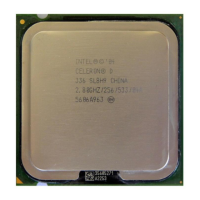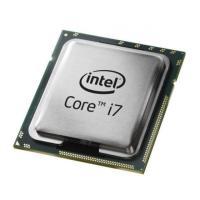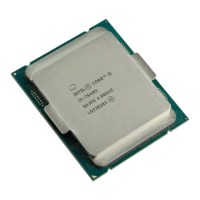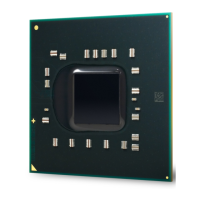Intel
®
Celeron
®
D Processor in the 775-Land LGA Package Thermal Design Guide41
Order #303730
LGA775 Socket Heatsink Loading
Note: The heatsink preload must remain below the maximum load limit of the package at all times. Refer
to processor datasheet.
Note: Board deflection should not exceed board manufacturer specifications.
A.2.5.1 Board Stiffening Considerations
To protect the LGA775 socket solder joint, designers need to drive their mechanical design to:
• Allow downward board deflection to put the socket balls in a desirable force state to protect
against fatigue failure of socket solder joint (refer to Section A.2.1, Section A.2.2 and
Section A.2.3.)
• Prevent board upward bending during mechanical shock event.
• Define load paths that keep the dynamic load applied to the package within specifications
published in the processor datasheet.
Limiting board deflection may be appropriate in situations like:
• Board bending during shock.
• Board creep with high heatsink preload.
However, the load required to meet the board deflection recommendation (refer to Section A.2.3)
with a very stiff board may lead to heatsink preloads exceeding package maximum load
specification. For example, such a situation may occur when using a backing plate that is flush with
the board in the socket area, and prevents the board to bend underneath the socket.
A.3 Heatsink Selection Guidelines
Evaluate carefully heatsinks coming with board stiffening devices (like backing plates), and
conduct board deflection assessments based on the board deflection metric.
Solutions derived from the reference design comply with the reference heatsink preload; for
example:
• The Intel Celeron D Processor in the 775-Land LGA Package.
• The Intel RCBFH-3 Reference Design available from licensed suppliers.
Intel is also collaborating with vendors participating in its third party test house program to
evaluate third party solutions. Vendor information will be available and updated regularly after
product launch at http://developer.intel.com. After selecting the processor, go to the processor
technical information page, then select Support Component.

